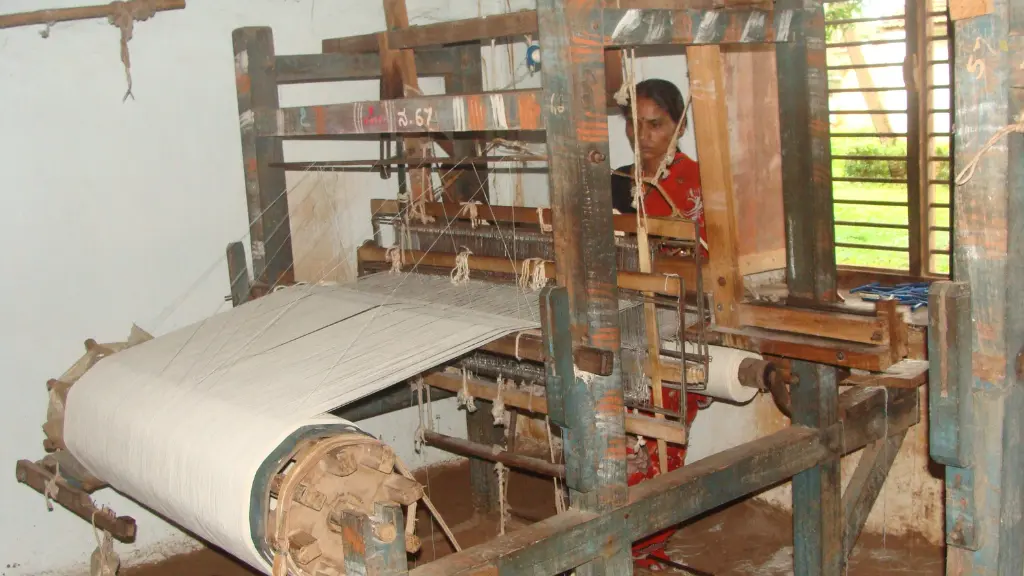Khadi, often referred to as the fabric of freedom, holds a significant place in India’s history and cultural identity. This handspun, handwoven textile became more than just a cloth during India’s struggle for independence—it became a symbol of self-reliance, resistance, and economic freedom.
For audiences in the USA, understanding the story of khadi offers a deeper appreciation of how textiles can be intertwined with social movements and philosophies. Much like linen, khadi is a versatile, natural fabric, but it carries a rich legacy that makes it India’s unique answer to linen, embodying the essence of simplicity, sustainability, and resistance.
You May Also Like: Anita Dongre’s Diwali Barbie: A Desi Dream
The Birth of Khadi: A Call for Independence
Khadi’s roots in India stretch back centuries, but its modern significance was cemented during the early 20th century when Mahatma Gandhi championed it as a means of economic independence from British colonial rule. At that time, India was heavily dependent on British-manufactured textiles, which were imported in large quantities after being made from raw cotton grown in India itself.
Gandhi saw this as a form of economic exploitation. In response, he encouraged the masses to spin their own yarn and make their own clothes, promoting khadi as a means of self-sufficiency and a peaceful form of resistance against British oppression.
This movement, known as the Swadeshi Movement, encouraged Indians to boycott British goods and rely on homegrown products, with khadi becoming the central symbol. The spinning wheel, or “charkha,” became a symbol of India’s independence movement, and Gandhi himself often appeared spinning his own cotton.
This act was both practical and deeply philosophical. It promoted economic self-reliance, provided employment in rural areas, and rejected the dependence on foreign-made goods. For Gandhi, khadi was not just about clothing but about empowering the Indian people and laying the groundwork for a self-sufficient economy.
A Symbol of Self-Reliance and Simplicity
While khadi is often romanticized for its association with India’s independence, it is also deeply rooted in Gandhian values of simplicity and sustainability. Gandhi believed that the practice of making khadi would instill a sense of dignity in the common people, especially the rural poor. In contrast to industrialized manufacturing processes that exploited labor, khadi represented a way of life that was closer to nature and more respectful of human dignity.
In the USA, where industrialized fashion dominates, khadi offers an alternative that aligns with modern values of sustainability, ethical production, and slow fashion. Khadi is made by hand—from the spinning of the yarn to the weaving of the cloth—meaning that each piece is unique and requires time and skill to produce.
This labor-intensive process also creates jobs in rural communities, helping to sustain traditional craftsmanship. The philosophy of khadi resonates strongly with today’s eco-conscious consumer movements that prioritize sustainability, ethical labor practices, and reducing the carbon footprint of fast fashion.
Khadi vs. Linen: India’s Natural Answer
Khadi is often compared to linen because of its natural texture, breathability, and versatility. Like linen, khadi is made from natural fibers—primarily cotton, though it can also be made from wool and silk—and it has a similar coarse yet soft feel that becomes more comfortable with wear.
Both fabrics are highly breathable, making them ideal for warm climates, which is why khadi remains popular in India to this day. However, khadi’s cultural and historical significance sets it apart from linen and other natural fabrics.
While linen has a long history of being used for clothing and textiles in Europe, khadi is distinctly Indian, born from a struggle for freedom and self-sufficiency. The process of making khadi is slower and more labor-intensive than linen, as every step is done by hand. This makes khadi not just a fabric but a living testament to India’s history, artistry, and philosophy. It is a fabric with a soul, where every piece tells a story of tradition, resilience, and craftsmanship.
Sustainability at the Heart of Khadi
In today’s world, where sustainability is becoming a priority for consumers and businesses alike, khadi offers a solution rooted in centuries-old practices. Unlike mass-produced textiles, khadi is eco-friendly by its very nature.
The handspinning and handweaving processes use minimal electricity, and the cotton used in khadi is often grown organically without harmful chemicals or pesticides. The production of khadi also results in far less waste compared to industrial textile manufacturing, making it a perfect choice for those who are conscious of their environmental footprint.
Furthermore, because khadi is produced on a smaller scale, it supports local economies and promotes fair labor practices. In a world where fast fashion dominates, leading to widespread exploitation of workers and environmental degradation, khadi represents an ethical alternative. The resurgence of interest in slow fashion, particularly in the USA, makes khadi an appealing option for consumers who want to make conscious fashion choices that align with their values of sustainability, ethical labor, and environmental stewardship.
Khadi in Contemporary Fashion
In recent years, khadi has undergone a revival in India and abroad, with designers and consumers alike recognizing its value beyond its historical and cultural significance. Today, khadi is not just a fabric for simple, traditional wear—it has entered the realm of high fashion. Leading Indian designers have incorporated khadi into their collections, experimenting with modern cuts, bold prints, and new styles, bringing a contemporary flair to this age-old textile.
For the American market, khadi presents a unique opportunity to embrace a fabric that blends tradition with modernity. Its natural look, eco-friendly credentials, and versatility make it ideal for a variety of clothing, from breezy summer dresses and relaxed shirts to more formal attire. Khadi’s texture and drape allow for both casual and sophisticated designs, appealing to a wide range of fashion tastes.
Furthermore, as sustainability becomes more than just a trend and moves towards being a lifestyle choice for many American consumers, khadi offers a fabric that not only looks and feels good but also has a story that resonates with today’s values. By wearing khadi, consumers are not just making a fashion statement—they are supporting a tradition of ethical production, environmental consciousness, and cultural heritage.
The Future of Khadi: A Global Fabric
As global consumers, especially in the USA, become more attuned to the need for sustainability and ethical sourcing, khadi’s future looks promising. It is not just a fabric but a movement—a reminder that what we wear can reflect our values and impact the world in meaningful ways. In the global fashion industry, where trends often prioritize aesthetics over substance, khadi stands out as a fabric with depth—a fabric that carries with it the legacy of freedom, self-reliance, and environmental responsibility.
For American consumers looking to make more mindful fashion choices, khadi offers a way to connect with a fabric that is as rich in history as it is in texture. It serves as a reminder that fashion can be beautiful, comfortable, and sustainable without sacrificing ethical integrity. With its deep connection to India’s cultural and political history, khadi is truly India’s answer to linen—a natural, breathable fabric that also carries a powerful message of resistance, resilience, and responsibility. As the world looks for more sustainable ways to dress, khadi is poised to take its place on the global stage, embodying the ideals of both past and future generations.










